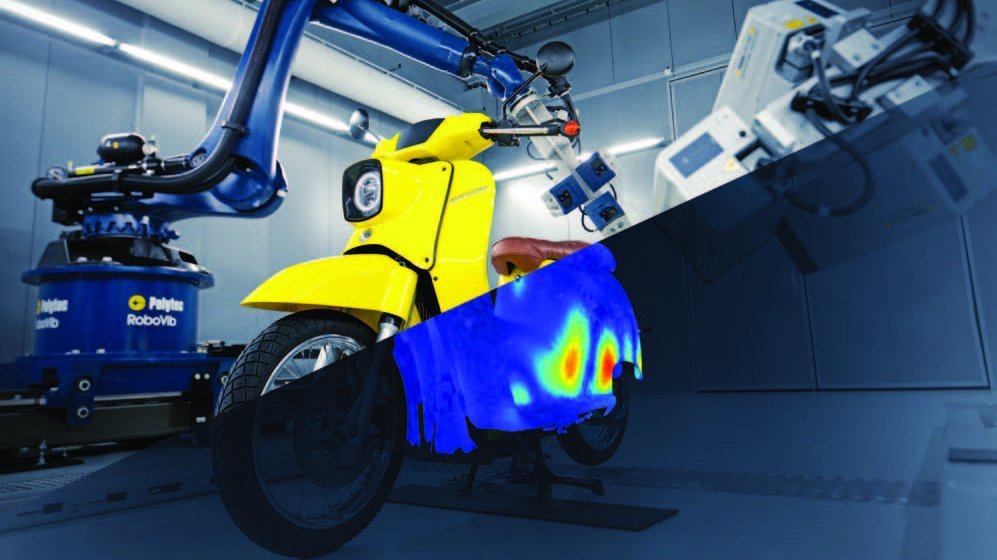Full-field optical vibration sensing reveals the root cause of unwanted noise sources to help NVH engineers deal with new challenges related to vehicle electrification. With the introduction of electrification to vehicles, a fresh set of challenges has arisen for the NVH engineer. Noise sources that were previously masked by the combustion engine are now top on the NVH engineer’s list of sounds to minimize. To successfully minimize such noises, high-performance tools are required.
The aforementioned noises predominantly have one common characteristic– higher frequency content that was not a concern in the past. Measuring at high frequency using conventional measurement techniques (and simulation tools) can push the tools to their performance limits.
When it comes to acquiring reliable data from lightweight and acoustically radiating surfaces, optical vibration measurement systems are a well-established alternative to accelerometers. Specifically, scanning laser Dopplervibrometer (SLDV) technology combines both high amplitude resolution and a frequency independent spatial resolution. The technology provides high-fidelity test data to the simulation department for NVH model updates and at the same time an intuitive visualization of the amplitude distribution on the test article.
With EV drivetrains, there are other NVH challenges due to the fact that the electric motors can be placed at the front or rear axle, or inbetween as part of the gearbox. Electrified rear axles integrating the controlel ectronics are not acoustically isolated from the car’s interior, especially in station wagons or SUVs. Proper acoustic insulation is key for customer satisfaction. Installations adding more heavy constrained layer material yield unnecessary weight, which affects efficiency. To find the best solution and minimize the treatment needed, the results from a laser scan provide the basis for accurate localization and design of the sound package, as shown in the image below.
In psychoacoustics, one is taught that a sharp or tonal high-frequency noise is extremely annoying for a passenger. Many of the new EV sound sources such as gearwhine, high harmonics from electromagnetic imperfections in the electric motor, and different radiation mechanisms (e.g. booming noise), can excite portions of the vehicle. These become more audible as local modes of cast or pressed components, or even a simple sheet metal fixture, may act as a ‘speaker’ in the higher frequency range (see modal test data below). Its independence from the acoustic wavelength and the chosen field of viewmakes the SLDV a suitable tool for revealing local modes prone to radiating sound in the critical frequency range above 1kHz.
Measuring the structural borne vibration directly at the source provides test data that can validate and improve simulation models, while at the same time providing a visual understanding of the structural dynamics of components and thus a starting point to develop troubleshooting measures. SLDV is a very efficient tool that adds to the NVH engineer’s toolbox. It enables the engineer to dig deeper and to find the root cause of airborne noises.
This article was published in the specialized journal Automotive Testing Technology International in November 2019.
